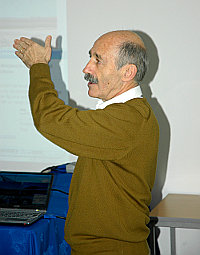 Professor Santiago Hernandez from the University of A Coruña recently delivered a lecture on Aerodynamic Analysis of a Photovoltaic Solar Tracker at the Wessex Institute of Technology.
Professor Santiago Hernandez from the University of A Coruña recently delivered a lecture on Aerodynamic Analysis of a Photovoltaic Solar Tracker at the Wessex Institute of Technology.
Solar trackers are popular as they can produce electricity in a very efficient manner, ie by following the movement of the sun in the sky. The work was prompted by the requirements of a company developing the system. The aim was to identify the maximum wind speed for each limit state (LS) required by the structure.
The first step was to determine the wind speed for the site and proceed to analyse the critical state. Wind speeds can be obtained from the codes or from meteorological data. In this particular case, accurate wind speeds were available from two weather stations located in the vicinity. These records were processed using statistical distribution. Values obtained from statistical analysis were lower than those required by the code, which consequently were the ones adopted in the calculations.
The wind speed allows for the determination of the static pressure for different inclinations of the tracker panels. The effects of loads such as self weight and different inclinations were discussed. The loads were then multiplied by a safety coefficient (1.35) to find the maximum limit state.
The problem was that for angles larger than 10% from the horizontal the structural response was unacceptable. It was necessary to find a solution to allow for proper tracking. It was decided to find the values of wind speed for which the panels are structurally sound at different inclinations. If those values are exceeded, the panels were to be folded.
The problem is still under study as the design prepared by the company was not suitable to withstand the winds at the site.

 Wessex Institute
Wessex Institute